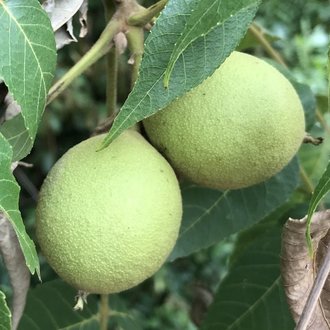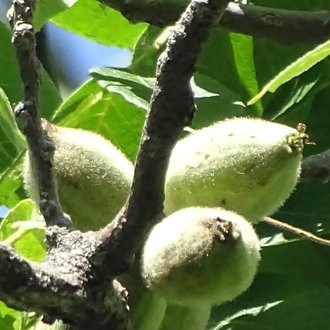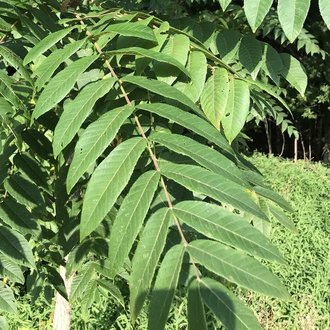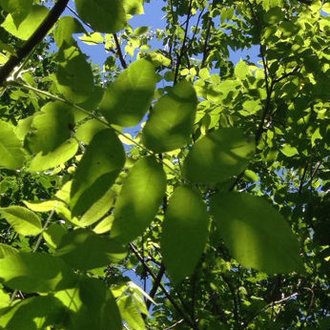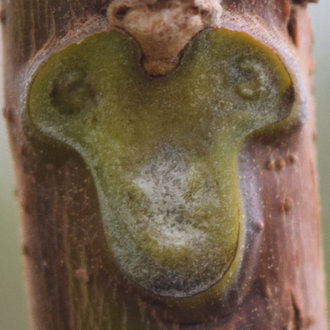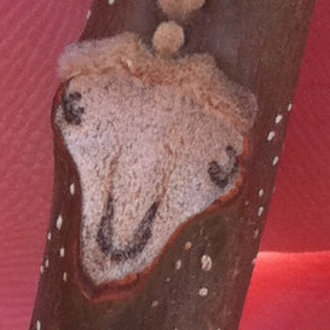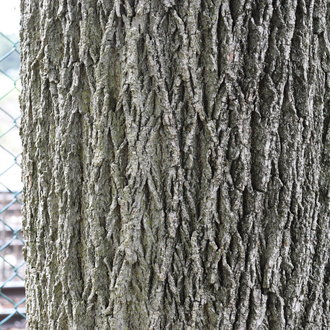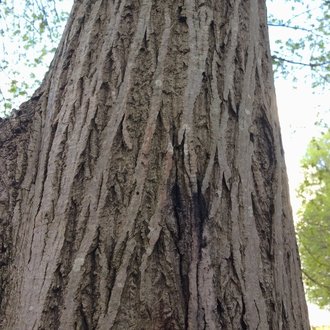Eastern Black Walnut vs Butternut
These plants are notoriously difficult to tell apart, but mature trees can be easily distinguished by nut shape or bark, and leaf scars can usually distinguish even smaller trees. Leaf shape and leaflet count partially overlaps but can be used for identification in many cases. Due to a canker disease, butternut has become much less common where these species' ranges overlap.
Eastern Black Walnut (Juglans nigra) | Butternut (Juglans cinerea) |
A widespread and common tree native to eastern North America, valued for its nuts as well as its wood. | A tree native to eastern North America, mostly found on well-drained slopes; dying back due to a canker disease. |
Fruits almost spherical, not pointed. Photo © Madison Gover, CC BY 4.0. | Fruits oblong and pointed. Photo © Shirley Zundell, CC BY 4.0. |
Leaves typically have 15-19 leaflets, occasionally as few as 9 or as many as 23. Leaflets average longer and narrower, but there is much overlap. Leaves often lack a terminal leaflet. Photo © Terri, Public Domain. | Leaves typically have 11-17 leaflets, occasionally as few as 7 but almost never more than 17. Leaflets average shorter and broader, but there is much overlap. Leaves usually have a terminal leaflet. Photo © Charlie Hohn, CC BY 4.0. |
Leaf scars distinctly notched at top. If there is any hair above, it is only at the center and not extending across the entire top. Looks like a face with eyes not as strongly pressed against the sides. Photo © , CC BY-SA 4.0. | Leaf scars not notched or only weakly notched at top, a wooly fringe across the entire top of the leaf scar. Looks like a goat face with eyes pressed far to the sides. Photo © charlie, CC BY 4.0. |
Bark of mature trees darker and more rugged, with narrow ridges and deep furrows. Ridgetops rough, not smooth. Photo © Alex Zorach, CC BY-SA 4.0. | Bark of mature trees with longer, unbroken ridges with smooth light grey on outermost portion. Photo © Charlie Hohn, CC BY 4.0. |
References & External Resources
These short lists show only links helpful for ID. For a complete list of references and resources also covering other aspects of ecology, visit the links section of the full article on each plant, which is the first entry here.



